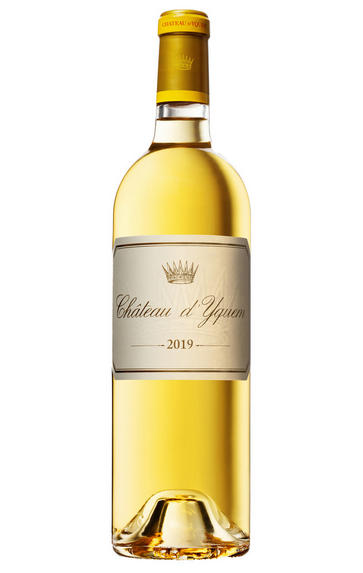
2019 Château d'Yquem, Sauternes, Bordeaux
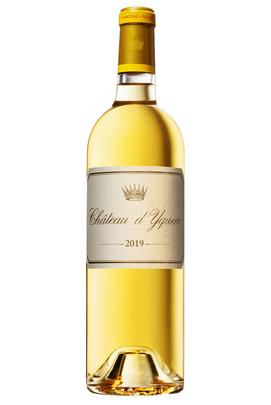
Critics reviews
Owners LVMH took the decision to delay the release of the 2019 Yquem until spring 2022. It was tasted with winemaker Sandrine Garbay in London. After the summer drought when Sauternes received just 2.5mm of rain until 26 July, that day saw a 112mm deluge that replenished underground reserves and gave ripening the push it needed. Dry and warm conditions prevailed throughout September when there was no sign of botrytis infection. That was finally provoked by 38mm of rain between 21 and 25 of September, followed by warm clement weather. After minor picking of Sauvignon Blanc on 7 of October, the main harvest began in earnest on 10 October. Pickers worked over the following five days, including Sunday. Time was of the essence because, as forecasts predicted, the weather suddenly changed on 14 of October with 40mm or rain. After that, the picking teams skirted between showers between 17 and 22 of October, though by now the fruit had begun to deteriorate. Therefore, the key aspect of this Yquem is the extremely tight picking window. The final blend contains 138g/L residual sugar, which is slightly less than the previous vintage, with 5.5g/L total acidity and 14.4% alcohol. Tasting the 2019, I noticed that it has a slightly paler hue compared to recent vintages (though I never read too much into the colour of young Sauternes.) For certain, it has a highly-aromatic bouquet that is beguiling in purity, enticing aromas of honeysuckle and saffron, soon joined by camomile, white flowers and orange blossom. It has wonderful delineation and gains intensity with aeration. The palate is supremely well-balanced with fine bead of acidity. Very harmonious and armed with just the right amount of viscosity, this Yquem is surprisingly understated at first but gains presence, offering irresistible flavours of layers of honey, lemongrass, lemon thyme and orange pith. Yquem is so tempting in its youth, but I feel that this vintage will repay those with the nous to cellar for at least a decade.
Drink 2032 - 2080
Neal Martin, vinous.com (Feb 2022)
Clear push and pull between acidity and lusciousness from the first moments. A higher percentage of Sauvignon Blanc than in a typical year, showing in sculpted gunsmoke and white truffle on the opening beats. Fresher flavours continue with lemongrass and lime zest, broadening out into luscious mango, grilled caramel, pineapple and brioche, and a welcome edge of bitterness on the finish with mandarin peel and oyster shell salinity. As has so often been the case in recent years, the team at Yquem needed to hold their nerve, as a dry September meant the noble rot took its time to get underway, with harvest finally taking place from around October 10 though to early November. 138g/l residual sugar, 10hl/h yield. Organic conversion began in August 2019, with certification expected 2022. Winemaker Sandrine Garbay.
Drink 2022 - 2050
Jane Anson, janeanson.com (Mar 2022)
The 2019 vintage of Château d'Yquem has the highest proportion (45%) of Sauvignon Blanc in any modern Yquem. The Sauvignon Blanc adds to the freshness, acting as a great balance to the succulent, sweet and voluptuous palate. Intense peach and apricot, combined with lemon and orange zest, make this highly appealing to drink right away – an ideal vintage with which to start Yquem’s ‘lighthouse’ project. However, it would be a shame not to give this 10+ years maturation to see how it develops. Very well, I suspect. The growing season was both warm and wet, with mildew a big threat. After a mostly dry September, 40mm rain came at the end of the month, leading to a very short harvest window. All of the Yquem grapes were picked in two tries within a one-week period. Residual Sugar: 138g/L.
Drink 2025 - 2060
Andy Howard MW, Decanter.com (Feb 2022)
About this WINE
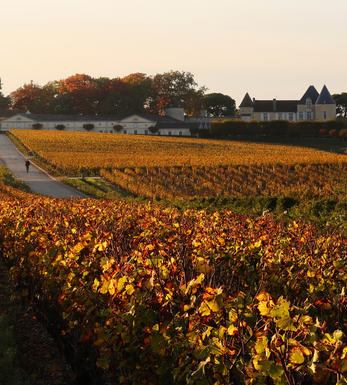
Château d’Yquem
Château d’Yquem is the leading estate in the Sauternes appellation on the Left Bank of Bordeaux. It has long been reputed for making one of the world’s great sweet wines. In the 1855 classification of Bordeaux wines, Yquem was given the lofty title of Premier Cru Supérieur – the sole property at that level. It sits comfortably among the First Growths of the Médoc and their equivalents on the Right Bank regarding its quality and prestige among wine collectors.
The estate has a noble history dating back to the 1590s. By 1711, it was owned by the Sauvage family, French aristocrats whose descendants would remain at the helm for almost three centuries. Yquem is now part of the Louis Vuitton Moët-Hennessy (LVMH) group, owned by Bernard Arnault, one of France’s wealthiest people.
Yquem is located in the heart of Sauternes, at the commune’s highest point and surrounded by many of the appellation’s other leading estates. The vineyard is planted to a majority of Sémillon, supported by Sauvignon Blanc. There are 113 hectares of vines, though only 100 hectares are used in any one vintage.
To make a bottle of Yquem depends on developing botrytis cinerea, the so-called “noble rot”, in the vineyard. Harvest involves up to 200 workers, passing through the vineyard up to 10 times to pick only those berries that have been infected with noble rot. This doesn’t happen uniformly, and it doesn’t happen every year. In some years, no Yquem is produced at all – as in 1964 or, most recently, 2012. Of this approach, President Pierre Lurton says: “It’s important to take a lot of risk. If you don’t take a risk, you don’t make Yquem.”
Today, Yquem is led by Pierre Lurton, its longtime President, along with Estate Manager Lorenzo Pasquini. The Cellar Master is Toni El Khawand, following the departure of Sandrine Garbay in 2022.
In addition to the sweet Sauternes produced here, there is also a dry white wine, Y (pronounced “ee-greck”).
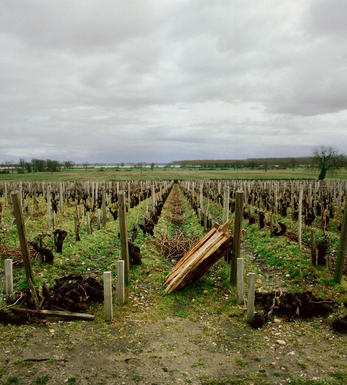
Sauternes
Sauternes is where arguably the world's finest sweet white wines are produced. The Sauternes appellation actually consists of five communes: Barsac, Preignac, Bommes, Fargues and Sauternes itself. Barsac is also an appellation in its own right.
Sauternes literally has an atmosphere different from any of the other major communes. At the southern tip of the Graves,close to the Garonne, not only is the land hillier and decidedly more bucolic but it also enjoys a specific mesoclimate of evening autumn mists which linger until well into the following day, unless burnt off by warm sunshine.
The mists are caused by the cool, spring-fed waters of the Ciron River meeting the warmer tidal Garonne, and the result is an ideal environment for the growth of the mould botrytis cinerea. When its arrival is felicitous, it feeds on the water in the ripe grapes, dehydrating them and leaving sweet, shriveled fruit.Other regions in Bordeaux (ie Cadillac, Loupiac) produce wines in a similar style from the same method, but none achieve the profundity and complexity of Sauternes.
Recommended Châteaux : Ch. D'Yquem, Ch. Climens (Barsac), Ch. Suduiraut, Ch. Rieussec, Sigalas- Rabaud, Ch. Coutet (Barsac), Ch. de Fargues, Ch. Lafaurie-Peyraguey, Ch. Doisy-Védrines (Barsac), Chateau Partarrieu, La Tour Blanche
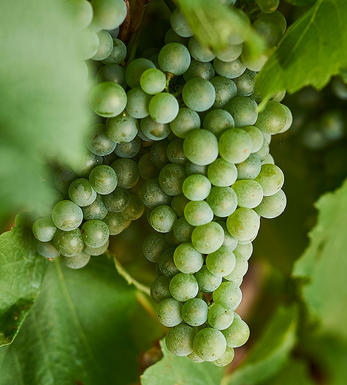
Sauvignon Blanc & Sémillon
The blend used for White Graves and Sauternes and rarely encountered outside France. In the great dry whites of Graves, Sauvignon Blanc tends to predominate in the blend, although properties such as Smith Haut Lafite use 100% Sauvignon Blanc while others such as Laville Haut Brion have as much as 60% Sémillon in their final blends. Sauvignon Blanc wines can lose their freshness and fruit after a couple of years in bottle - if blended with Sémillon, then the latter bolsters the wine when the initial fruit from the Sauvignon fades. Ultimately Sauvignon Blanc gives the wine its aroma and raciness while Sémillon gives it backbone and longevity.
In Sauternes, Sémillon is dominant, with Sauvignon Blanc playing a supporting role - it is generally harvested about 10 days before Sémillon and the botrytis concentrates its sweetness and dampens Sauvignon Blanc`s naturally pungent aroma. It contributes acidity, zip and freshness to Sauternes and is an important component of the blend.


Buying options
Add to wishlist
Description
I had the opportunity to taste this, rather unusually, as an aperitif to a meal themed around savoury pairings for Château d'Yquem. Despite being a little different to your standard pre-supper refreshment, it was no less delicious. Crystallised pineapple and soft-dried mango, classically underscored by peach and ripe apricot. Delicate aromatic spice and a nuance of the signature, saffron hallmark. Certainly, hedonistic but with a perfect freshness woven in. A truly beautiful expression of Yquem with such structure and fine balance that it promises to be vintage to remember.
Drink 2024 - 2060
Charlie Leech, Account Manager, Berry Bros. & Rudd (Mar 2022)
wine at a glance
Delivery and quality guarantee